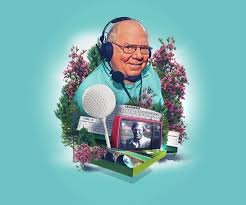A Brief History of Jazz

Jazz is easily one of the most influential genres in music history. Carrying a plethora of cultural history in its blue notes, influencing numerous musical movements, and creating a uniquely American musical scene, to attempt to briefly summarize the history of jazz is a difficult task. Nevertheless, here is a brief history of one of history’s most important movements, stepping across everything from ragtime to blue note jazz.
What are the Origins of Jazz?
Jazz music came into existence sometime in the late 1800s, started by African American musicians following the abolition of slavery. The style takes influence from Afro-American folk styles, including spirituals and work songs.
Taking its roots somewhat earlier in the 1800s is the genre of blues. Based heavily on improvisation and the 12-bar blues form: I-I-I-I-IV-IV-I-I-V-IV-I-V (if you know, you know), blues quickly saturated American folk music, stretching from impromptu jams to performative music.
The birth of jazz in the late 1800s arrives as a result of merging Afro-American folk styles following the end of the Civil War period with blues improvisation and style (which was formed out of the same traditions), as well as including influences of 1800s band music, and reimagined concert piano styles.
While it’s difficult to pinpoint exactly when, where, and how jazz came to be, we can confidently say it was an Afro-American-started musical movement, influenced by a number of musical traditions in the southern United States during the late 1800s.
Popularity of Jazz
Jazz is heavily based on improvisation and a unique sound. Each musician attempts to put their own spin on a song, or even to produce something entirely unique with the rest of the band. In the late 1800s and early 1900s, jazz would be heard primarily in clubs as music for attendees to dance to, and occasionally listen to intently.
Due to its unique nature, Jazz blossomed in the Mississippi region, especially in New Orleans during the early 20th century. This was largely due to the melting pot of traditions and histories that coexisted within the city.
While there were clubs and the occasional ‘concert,’ jazz really gained traction and popularity in the 1920s. The first jazz recording was done in 1917, allowing people to listen to, and realistic to jazz for the first time.
Louis Armstrong recorded his first solo on Chimes Blues in 1923, and famous jazz composer and pianist, Duke Ellington, recorded his first live ensemble in 1927.
The 1920s led to a boom of popularity of jazz that would only gain traction and continue to grow into the 30s, 40s, and rest of the 20th century.
The Jazz Icon
Since its boom in the 1920s, jazz has largely been a genre of icons. Many jazz artists are household names, and the lifestyles and mythos created around them only grew the industry. Composers and soloists such as Louis Armstrong, Charlie Parker, Miles Davis, Dizzy Gillespie, Ella Fitzgerald, Billie Holiday, and John Coltrane all formed followings, competed and collaborated with each other, and gained recognition from the American people.
These jazz icons gained their prowess through their individual approaches to jazz, and in many cases, their stage presences. Unique movements and styles influenced and evolved the genre, and people competed with each other over who’s style was better, more nuanced, and required more talent.
While there are numerous stories that immortalized jazz icons, simply focusing on Charlie Parker gets the message across. Parker’s life included stories like having a cymbal thrown at his head by drummer Jo Jones at 16, to the coroner estimating his age at 65 when Parker died at 34 because of the damage done to his body from drug and alcohol use.
Jazz was not merely a genre created from its music, but from the personalities behind the music.
Records and Evolution
Within the blues scale there is a flat third in a major pentatonic, and a flat fifth in a minor pentatonic. This note is known as the blue note. In order for something to be blue note jazz, it has to include this scale in its foundation. Properly, one of the proponents of jazz growth over the last century was blue note records, representing artists like John Coltrane, Herbie Hancock, Donald Byrd, and Norah Jones.
Record companies like this helped the jazz industry grow and blossom into something listened to in households, talked about, innovated on, and evolved.
Sub-genres like acid jazz, bebop, funk, jazz fusion, avant-garde, smooth jazz, and countless others were able to dominate the American music industry, retaining prevalence as musical genres evolved and shifted.
Still Kicking!
Jazz has not gone anywhere, and still has a more than prevalent hold on music and musicianship. While it may not have the pop-culture strength it once did, it continues to produce brilliant musicians, and to be considered one of the greatest musical art forms. From its appearances in cinema, to bands at jazz clubs, to your headphones or record player, jazz is still kicking, giving us the unique blue notes and improvisations that make us grin, nod, and know, “that’s jazz.”




“Jazz is not dead, it just smells funny.”